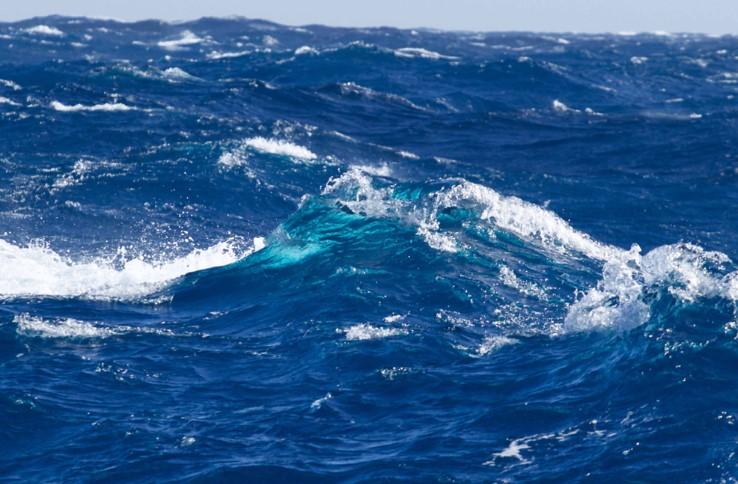Australia and France collaborate to reduce environmental security risks
Posted By Anthony Bergin on June 27, 2019 @ 12:00

In the ‘Vision statement on the Australia–France relationship [1]’ published last May, Malcolm Turnbull and Emmanuel Macron said they ‘welcomed the project to map environmental risks in the south of the Indian Ocean and the Southern Ocean, which will help to understand and anticipate the security consequences of climate phenomena’.
The resulting report [2] is a key step from the vision statement and Macron’s visit to Australia. Environmental security in the eastern Indian Ocean, Antarctica and the Southern Ocean: a risk mapping approach was publicly released last week by the Australian National University’s National Security College. I was the chief investigator for the study and worked closely in preparing the report with David Brewster [3], François Gemenne [4] and Paul Barnes [5].
The study establishes an environmental security ‘risk map’ for our near region. It provides a contribution to the national security assessments of Australia and France and an enhanced foundation to inform policy decisions about the allocation of national resources, identifies opportunities for cooperation and suggests priorities. French researchers will release a similar study of environmental security risks in the western Indian Ocean next year.
The report assesses the likelihood and consequences of major potential disruptions, details cross-cutting sources of disruption and possible triggers for concerted action, and considers the implications of emergent issues or threats and escalated responses to them (including likely cascading and compounding impacts if threats aren’t addressed).
The methodology for how the risk matrices were constructed is set out in detail in the report. The risk assessment matrix [6] for the eastern Indian Ocean identifies threats and challenges to this subregion of the Indian Ocean [7] that is closest to Australia. The countries in this area are Australia, Bangladesh, India, Indonesia, Malaysia, Myanmar, Singapore, Sri Lanka, Thailand and Timor-Leste.
The report makes nine recommendations in relation to the eastern Indian Ocean. They include the following:
- Australia and France should join with like-minded partners to build dialogue, cooperation and training among Indian Ocean coastguards. This could include a dedicated facility for the professional development of senior coastguard officials in the region.
- Australia and France should work together to promote the establishment of integrated national maritime domain awareness systems in the Indian Ocean.
- Australia and France should join with other partners to establish an Indian Ocean environmental security forum. This would bring together representatives from military and civilian agencies to create shared understandings of environmental security threats.
In the area south of latitude 60°S, both France and Australia look at Antarctica and the Southern Ocean through a strategic lens, focused on supporting and strengthening the Antarctic Treaty System. France and Australia have adjacent territory in Antarctica: France’s Adélie Land bisects the Australian Antarctic Territory.
Both nations also possess neighbouring island territories in the sub-Antarctic region—for France, the Kerguelen and Crozet Islands, and for Australia, the Territory of Heard Island and McDonald Islands (HIMI). Both countries also assert their rights to the maritime zones around their territories, including sections of the Kerguelen Plateau. A delimitation agreement settles the boundary between Kerguelen and HIMI.
The risk assessment matrix [8] for the Southern Ocean and Antarctica sets out the threats and challenges to this area.
The report makes 14 recommendations for cooperation between France and Australia in the region south of latitude 60°S, including the following:
- Australia and France should facilitate a regular multilateral search and rescue exercise in the future around the HIMI and Kerguelen area, in the Southern Ocean and on the Antarctic continent.
- Australia and France should jointly examine the management implications of climate change in the Antarctic region, looking at future Antarctic infrastructure, logistics, environmental management, the terrestrial environment, the marine environment and resources.
- As a trust-building measure for Antarctic countries, Australia and France should lead on identifying guidelines for establishing and reinforcing the resilience of Antarctic infrastructure that take current and predicted climate changes into account. COP 25 in Chile could be a suitable venue.
France–Australia cooperation can be further developed to assist in risk mitigation to better manage activities in the geographical areas discussed in the report. There are grounds for optimism here. Environmental interests have played a major role in driving France’s cooperation with Australia in Antarctica and the Southern Ocean.
Despite the distances between Australian and French territories in the Indian Ocean, there are also substantial opportunities for bilateral cooperation in the eastern part of the ocean, reflecting their past experience in cooperation, their capabilities and their shared perspectives on many issues. There are many opportunities for bilateral cooperation in high-level scientific research alliances relevant to the blue economy and climate change.
The protection of the eastern Indian Ocean, Antarctic and Southern Ocean ecosystems will require actions well in advance of when changes to those ecosystems may be detected.
Both Australia and France will need to work with a range of like-minded states with which they share common interests to address current challenges in managing the environmental system and the strategic risks that poor environmental management in the eastern Indian Ocean and the area south of latitude 60°S will bring.
Article printed from The Strategist: https://aspistrategist.ru
URL to article: /australia-and-france-collaborate-to-reduce-environmental-security-risks/
URLs in this post:
[1] Vision statement on the Australia–France relationship: https://dfat.gov.au/geo/france/Pages/vision-statement-on-the-australia-france-relationship.aspx
[2] resulting report: https://nsc.crawford.anu.edu.au/department-news/14413/environmental-security-eastern-indian-ocean-antarctica-and-southern-ocean-risk
[3] David Brewster: https://researchers.anu.edu.au/researchers/brewster-dh
[4] François Gemenne: https://medialab.sciencespo.fr/people/francois-gemenne/
[5] Paul Barnes: https://www.aspistrategist.ru/bio/paul-barnes
[6] risk assessment matrix: /wp-content/uploads/2019/06/Bergin-et-al.-Table-1.pdf
[7] threats and challenges to this subregion of the Indian Ocean: https://s3-ap-southeast-2.amazonaws.com/ad-aspi/2019-03/SR%20134%20Australias%20second%20sea.pdf?2WjcWmE_URM1nPZC06JA3pAm60XnoW8B
[8] risk assessment matrix: /wp-content/uploads/2019/06/Bergin-et-al.-Table-2.pdf
Click here to print.